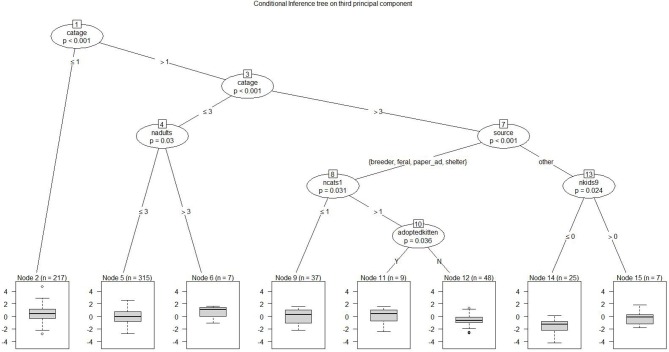Figure 6.
Conditional inference tree on third principal component: cat's playfulness and child's positive reaction. Each node represents a dichotomous split based on a demographic factor that distinguishes between lower-responding and higher-responding observations for the third principal component. For example, node 1 shows that female cats aged 1–3 years scored higher on playfulness with more child's positive reactions. At node 13, older cats acquired from other sources (such as a relative or friend) were more playful with children and had higher positive reactions from them if there were 9–12 year old children in the family. The lowest scores were for cats at least 10 years of age (nodes 1 and 3), adopted from a situation that was not breeder, feral, ad, or shelter (e.g., a neighbor or family member; node 7), living without a 9–12 year old (node 13). Statistical tests are noted at each node.

